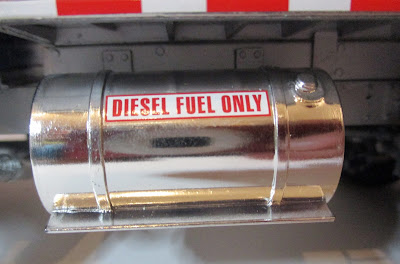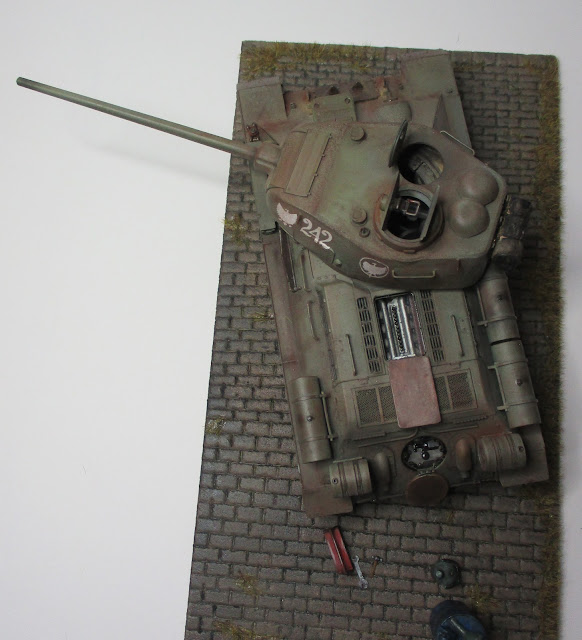With a cold and sometimes snowy day it has been a good excuse to stay in and do those usual weekend chores as well as some modelling. That modelling has been spent on finishing up the small jobs on the Italeri Volvo FH16. It still surprises me just how long putting the final details on a model can take but they are probably the most important parts in giving that overall view of your model. Hopefully it will be complete to the point of being ready for the cab to be weathered by the end of this weekend but with my record of completing models there is no guarantee!
In the meantime I thought it would be good to have a reflective look back on a model I finished probably about eight to ten years ago (the mere fact that I cannot remember when exactly is proof that this blog will indeed be my diary to look back on and find out when!)- The Tamiya 35252 King Tiger Ardennes Front edition. Still available to buy and a search on the internet brings about the fact that it will cost about £35. For that you get Tamiya's usual quality kit with three figures and a motorbike. From memory the kit went together well and ends up as a large and impressive model for your display shelf. At the time I built the kit the painting would have been airbrushed Tamiya acrylics with a mixture of powders and oil paints used for the weathering. Being reflective, I can see how I might have done the kit differently. Some more weathering, especially on the wheels and tracks and perhaps some aftermarket etch parts would have added to the overall detail. I won't say too much about the figures. Firstly the motorcyclist and bike included in the kit and built by me at the same time as the tank, would have appeared in the images below if they had not decided in Evil Knievel fashion to launch themselves off the display shelf as I picked up the tank! Unlike Evil, who spent months in hospital to get his body back in shape after one of his Dare Devil motorbike stunts, a few minutes with some glue should bring the model rider and motorbike back to life. Secondly I cannot paint figures! I do believe figure painting, especially faces, is an art that you either have or don't and there is little in between. I have admired and studied the work of those who can, I have read the books on how to do it, watched the video tutorials in how to achieve perfection in a few easy steps, spent hours practicing on figures and still I end up with something that looks either like a clown or death! In view of that, the figures on this tank are there more as a token gesture rather than any great historic record of King Tiger tank crews. However overall I am still pleased with what I produced but it is useful to sometimes look back to reflect on the lessons that can be learnt by seeing what you did nearly a decade ago.
Now to the pictures which you can click on to get a larger image....























































